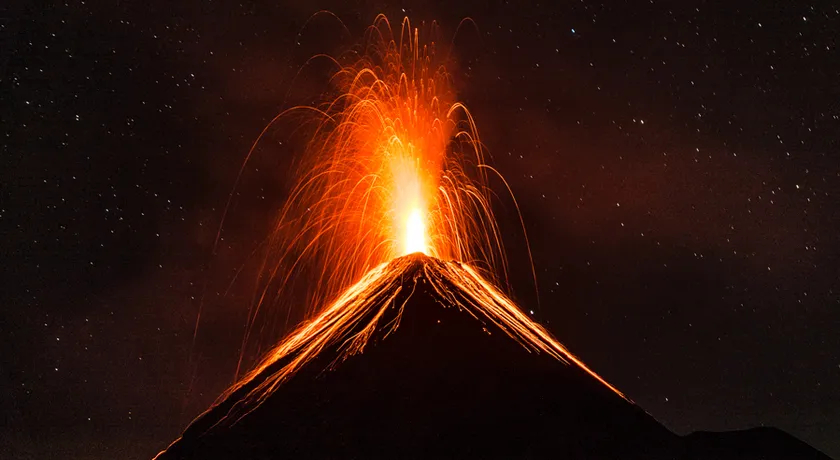Mount Ruang

- 19 Apr 2024
Why is it in the News?
A remote volcano in Indonesia’s outermost region erupted again on April 19 after the crater threw up columns of smoke and lava multiple times this week and forced thousands to evacuate.
About Mount Ruang:
- Mount Ruang is an active stratovolcano located in the Sangihe Islands arc, North Sulawesi, Indonesia.
- It is the southernmost volcano in the region, situated on an island that measures 4 by 5 kilometers wide.
- The summit features a partial lava dome and reaches an altitude of 725 meters.
- Mount Ruang has experienced multiple eruptions throughout its history, with the most recent ongoing eruption starting on April 18, 2024.
- The volcano's eruptions often generate ash columns, lava flows, and gas emissions, posing risks to nearby communities.
What is a Stratovolcano?
- A stratovolcano is a tall volcano shaped like a cone, formed by various layers of materials such as volcanic ash, hardened lava, pumice, and tephra.
- Stratovolcanoes are steep and have periodic explosive and effusive eruptions, although some have calderas, which are collapsed craters.
- The highly viscous lava that flows from this type of volcano cools and hardens and in turn, does not spread far.
- The magma that forms this lava is generally felsic.
- Stratovolcanoes are more common than shield volcanoes.
- One of the famous stratovolcanoes is Vesuvius which destroyed Herculaneum and Pompeii in 79 CE.
Formation Of Stratovolcanoes:
- Stratovolcanoes occur mostly in subduction zones, where the oceanic crust slides under continental crust.
- The descent of the oceanic plate causes the release of trapped water from hydrated minerals and porous rock, into the mantle rock in the area above the oceanic slab.
- This process occurs at different pressures depending on the minerals.
- The water lowers the mantle rock’s melting point, causing partial melting and its rise to the lithosphere forming a temporary pool.
- The magma then continues to rise through the crust collecting rock rich in silica.
- The magma finally pools in the magma chamber which is either within or under the volcano.
- The low pressure at this point causes the volatile compounds such as water, carbon dioxide, and sulfur dioxide dissolved in the magma to escape.
- When the magma and gas accumulate to a critical level, they overcome the rock blockage of the volcanic cone and erupt violently.
